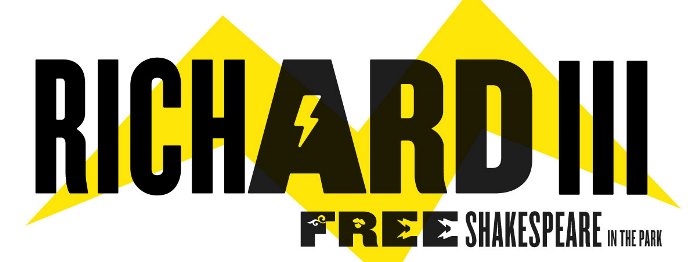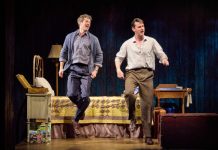The 60th season of The Public Theater’s Free Shakespeare in the Park has opened at the Delacorte Theater with a new production of Richard III, directed by Tony Award nominee Robert O’Hara (Slave Play), that reimagines the timeless classic in the context of today and plays the tragic history largely for laughs. For those who enjoy updated deconstructions that reference the socio-political climate of our current times, while also promoting diversity and inclusion, this is a production you might appreciate. For Shakespeare purists (of which I am one), it’s a reworking that misses the mark on the motivation of the Bard’s eponymous character (as clearly delivered in his opening “winter of our discontent” soliloquy), the horror of his vengeful acrimony, and the play’s serious universal message.
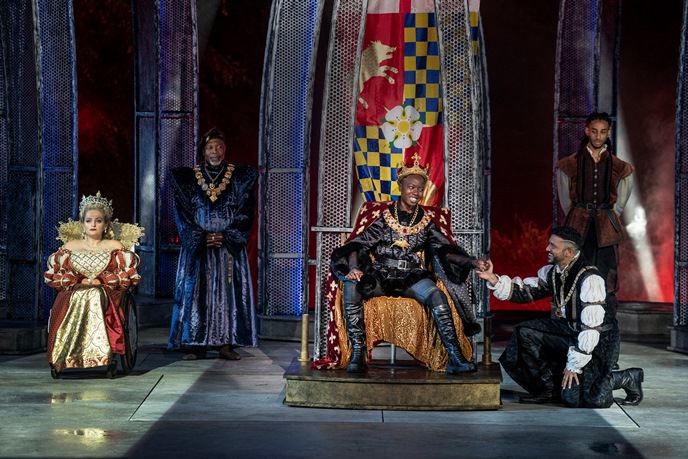
Written ca. 1592–94, and the second longest play in Shakespeare’s canon (after Hamlet), Richard III is set in England during the 15th-century War of the Roses between the Houses of York and Lancaster. It traces the rise and fall of the villainous short-lived monarch, and the unmitigated violence and beguiling deceitfulness he employs in his manipulative and murderous quest for the throne of England, as he kills his brothers, nephews, and ill-procured queen, opponents and accomplices, and lures his supporters with his brilliant and charming eloquence, to achieve his goal of becoming king. It is all driven, he tells us at the very beginning, by the insulting and disparaging epithets and scornful perceptions of his physical form and appearance (“I, that am rudely stamp’d . . ./Cheated of feature by dissembling nature,/Deformed, unfinish’d, sent before my time/Into this breathing world, scarce half made up,/. . . so lamely and unfashionable/. . . descant on mine own deformity:/And therefore . . ./determined to prove a villain”). It should be noted that recent studies of his remains indicate that Richard suffered from scoliosis, or curvature of the spine, that seems to have resulted in an uneven alignment of his shoulders, with one slightly higher than the other.
O’Hara has chosen to forgo the established view of the lead character in favor of his own interpretation, in which Danai Gurira stars as a physically and verbally agile Richard, not the “bunch-backed toad” he is demeaned as in the script. Her command of Shakespearean verse is expert, her demeanor dramatically shifts from winsome to menacing, and her cheeky and caustic facial expressions and sideways glances bespeak his duplicitous thoughts and actions, as do her direct-address asides to the audience, garnering laughs, cheers, and applause for the ruthless killer (and showing how easy it is for the public to be duped by a dissembling politico).
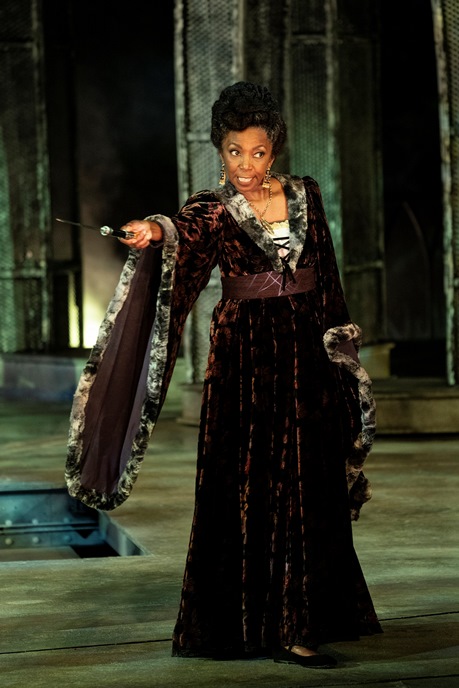
Richard III was staged four times previously for Shakespeare in the Park, in 1966, 1970, 1983, and 32 years ago, in 1990, in a more traditional classical production featuring Denzel Washington in the titular role, and Sharon Washington as his soon-to-be late wife Anne. She is now making a stellar return as Queen Margaret, widow and mother of the slain King Henry VI and Prince Edward, respectively. Her show-stealing performance embodies the profound gravitas of her character, the righteous rage and tormenting pain she feels at the murders of her husband and son, and the potent prophetic curses she levels at Richard. All are communicated with unsurpassed empathy and an impeccable mastery of Shakespeare’s language and meter.
Additional standouts in the large cast are Michael Potts as Lord Stanley, Daniel J. Watts as Ratcliffe, Sanjit De Silva as Buckingham, and Monique Holt as Richard’s mother, the Duchess of York, who delivers her performance in ASL and convincingly captures the woman’s grief, sorrow, and anger, ultimately condemning the atrocities her son has committed against their own family. Many of the other characterizations and much of the inherent drama were undermined, for me, by an uneven cast that was not always adept at delivering the playwright’s poetic speech and rhythm, and by the directorial choices of unnecessary anachronisms (current jargon, gestures, and movements) and excessive jocularity (though there are always some points of humor in Shakespearean tragedies to provide moments of relief from the devastation).
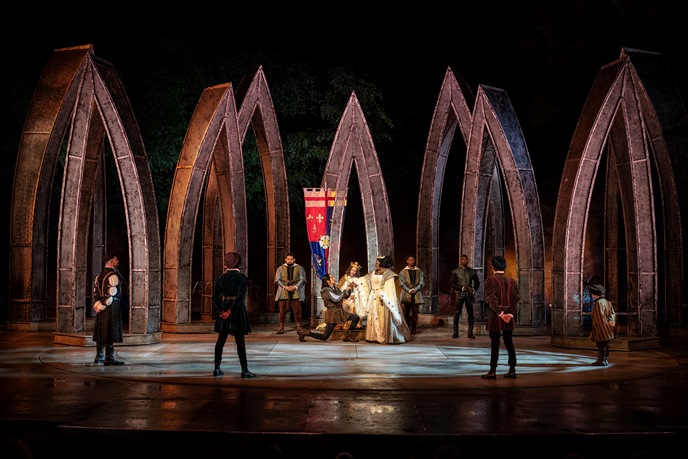
The artistic design of the show is also an inconsistent mashup, in keeping with the updated concept. Costumes by Dede Ayite combine period-style and post-modern elements (including the glittering sneakers of the young princes), as do the scenic design by Myung Hee Cho (consisting of towering freestanding High Gothic arches constructed of rusting metal, illuminated with colorful neon lighting by Alex Jainchill and hung with authentic flags of the embattled Houses). Original music and sound by Elisheba Ittoop, combined with haze effects, successfully evoke the sensibility of Richard’s terrifying dream of his victims’ ghosts haunting him the night before the fateful Battle of Bosworth Field, but fight direction by Teniece Divya Johnson and Jeremy Sample is often awkward and poorly executed by the cast, and O’Hara’s downstage blocking of the actors, along with the rotation of the set’s arches, frequently obstruct the audience’s view of the main centerstage action.
In its attempt to highlight the play’s relevance for the present, Free Shakespeare in the Park’s production of Richard III presents a tenuous mix of then and now that doesn’t always capture the tone of the classic or the essence of its characters but offers a new interpretation of its universality.
Running Time: Approximately two hours and 40 minutes, including an intermission.
Richard III plays through Sunday, July 17, 2022, at Free Shakespeare in the Park, performing at the Delacorte Theater, Central Park West at 81st Street, NYC. For information on how to access free tickets, distributed in a variety of ways, go online. Everyone must show proof of COVID-19 vaccination and a photo ID to enter; masks are not required but recommended.


